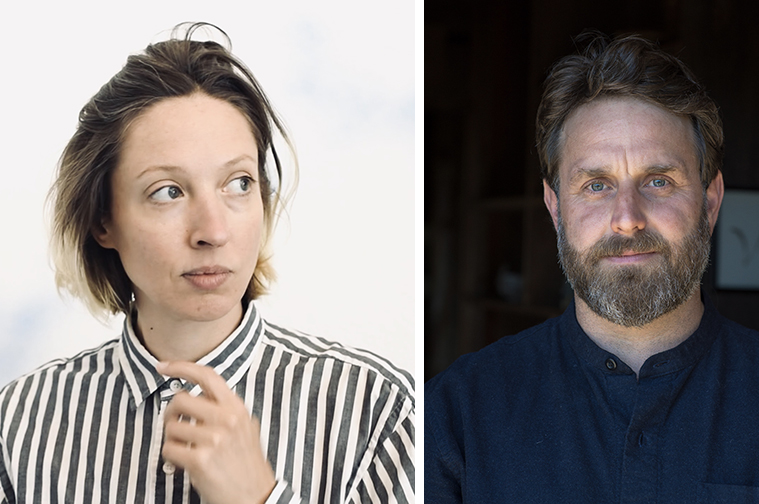
Two Johnny Carson Center for Emerging Media Arts faculty were among three University of Nebraska–Lincoln faculty who have been selected for seed funding from the Office of Research and Economic Development's Arts and Humanities Research Enhancement Program.
The goal of the program is to foster excellence in research, scholarship and creative activity in the arts and humanities, and to increase recipients’ competitiveness for external funding or enhance the societal impact of their work.
The receipients are:
• Jesse Fleming, assistant professor in the Johnny Carson Center for Emerging Media Arts, who will collaborate with Nebraska physicist Kees Uiterwaal to develop an augmented reality experience that allows users to “see” the submicroscopic world of quantum physics.
• Ash Smith, assistant professor in the Johnny Carson Center for Emerging Media Arts, who will collaborate with colleagues from across more than 10 departments at the university to launch the Environmental Futures Platform, a consortium to incubate interdisciplinary projects that link art, nature and technology.
They join Ellen Donnelly, assistant professor of architecture, in receiving the grants.
Bob Wilhelm, vice chancellor for research and economic development, selected these projects with an eye toward achieving the university’s larger goals set forth in the N2025Strategic Plan. One target – increasing the extramural funding, scholarship and creative activities generated by interdisciplinary teams – is advanced by Fleming and Smith’s projects, which feature deep collaboration among faculty from diverse disciplines.
The N2025 plan also calls for the university to identify and invest in grand challenges – major societal issues that can be solved only through interdisciplinary collaboration. In his 2020 State of Our University Address, Chancellor Ronnie Green pinpointed two of those grand challenges as resilience in our changing climate and sustainable water and food security. Smith’s project, with its focus on planetary health and resilience, directly aligns with those themes.
“These projects reflect the program’s original goal of supporting excellence in the arts and humanities, which is more important than ever as our communities face public health and social problems that require critical thinking, collaboration and creativity – all hallmarks of the arts and humanities,” Wilhelm said.
“They also reflect our increasing emphasis on interdisciplinary research. Considering the depth and breadth of today’s problems, we’re proud to support projects that transcend disciplinary boundaries and merge expertise across fields.”
Fleming will collaborate with Kees Uiterwaal, associate professor of physics, to design an augmented reality experience that allows users to perceive the unseen world of quantum physics. Through AR, a computer-based technique that inserts 3D objects into our physical surroundings, the duo will design a tool that lets people “see” quantum shapes, some of which are 10 billion times smaller than a human.
Fleming, founding director of the Perceptual Technologies Lab at the Carson Center, will create the AR experience based on Uiterwaal’s analysis of quantum-dynamical processes. Users will wear a head-mounted, location-aware head display that senses its environment and projects interactive 3D objects into the space.
With AR emerging as an effective tool for science outreach and education, Fleming and Uiterwaal anticipate the work will boost their competitiveness for grants from agencies with a focus on broader impacts, such as the National Science Foundation.
Smith will collaborate with researchers from more than 10 units across campus to launch the Environmental Futures Platform, a consortium for researchers to pursue solutions to public and planetary health issues. Participants will use a speculative approach, a research methodology that asks “what if” questions to generate new directions. In its first year, the EFP’s themes are rural-urban interdependence and human and nonhuman collaborations.
The Carson Center and the Prairie Pines Nature Preserve, a 145-acre nature preserve in Lincoln, will serve as incubator hubs where researchers prototype experiments, collect data about the university’s interdisciplinary methods and create media like podcasts, videos, photos and animations to showcase their results. In fall 2021, researchers will present to the public at a Convergence event.
The EFP will unite Husker researchers from architecture, design, art history, sociology, business, veterinary science, and civil and environmental engineering, in addition to Nebraska One Health and the Water for Food Daugherty Global Institute at the University of Nebraska. Over time, scholars from additional disciplines are expected to join.